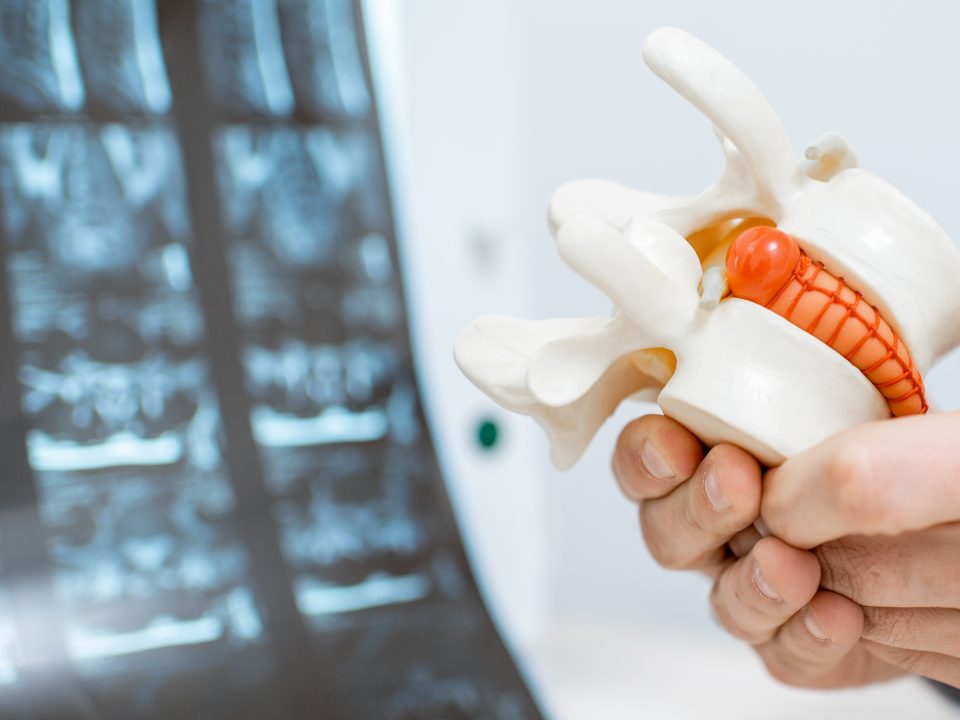
Disc pathologies of the cervical spine (neck): disc bulge, disc narrowing, disc herniation or disc protrusion and their treatments
05/03/23
Cervical disc herniation: understanding the causes, symptoms and treatment options
05/03/23The stenosis foraminal and spinal stenosis cervical spondylosis : causes, symptoms and treatment options
Introduction
The stenosis foraminal and cervical spinal stenosis are conditions that affect the cervical spine (neck). They are characterized by a narrowing of the spaces through which the nerves and spinal cord pass, leading to compression of these structures and causing pain and other symptoms. In this article, we will explore the causes, symptoms, and treatment options for these two types of stenosis.
Causes of Foraminal Stenosis and Cervical Spinal Stenosis
- Cervical arthritis: it is the progressive wear of the joints and the intervertebral discs, which can lead to a narrowing of the foraminal spaces and the spinal canal.
- Herniated discs: there degradation of intervertebral discs can cause protrusion of the nucleus pulposus, compressing the nerves or spinal cord.
- Vertebral fractures and dislocations: trauma can lead to deformation of the cervical spine and narrowing of the spaces.
- Spondylolisthesis: Slippage of one vertebra over another can cause a narrowing of the spinal canal.
- Abnormal growth of ligaments or bones: Certain medical conditions or birth defects can cause the ligaments or bones in the cervical spine to grow too much, reducing the spaces available for the nerves and spinal cord.
Symptoms foraminal stenosis and cervical spinal stenosis
- Cervical pain
- Pain radiating to the arms and shoulders
- Loss of muscle strength
- Numbness and tingling in the arms and hands
- Difficulty walking and coordinating movements
- Balance issues

Treatments for foraminal stenosis and cervical spinal stenosis
Here is a comparison table of the different treatments for cervical foraminal and spinal stenosis:
| Treatment | Description | Efficiency |
|---|---|---|
| Spinal decompression therapy | Non-surgical technique that involves gently stretching the spine to relieve pressure on the nerves and intervertebral discs. | High efficacy, lasting symptom relief |
| Osteopathy | Manual approach that aims to restore the balance and mobility of the structures of the spine. | Variable efficacy, depends on severity of stenosis and individual response |
| Drugs | Use of anti-inflammatories, analgesics and muscle relaxants to relieve pain and inflammation. | Temporary efficacy, symptom relief |
| Injections | Injections of corticosteroids or local anesthetics to reduce inflammation and pain. | Temporary and variable efficacy depending on the patient |
Considerations for the choice of treatment foraminal stenosis and cervical spinal stenosis
The choice of treatment will depend on several factors, such as the severity of the stenosis, the symptoms, the patient's age, and their medical history. It is important to consult with a medical professional to discuss the treatment options best suited to your situation.
Prevention foraminal stenosis and cervical spinal stenosis
To prevent the development of foraminal stenosis and spinal stenosis cervical spine, it is important to take care of your cervical spine by:
- Adopting a proper posture
- Practicing regular physical activity
- Maintaining a healthy body weight
- Avoiding sudden movements and trauma to the neck
- Consulting a healthcare professional as soon as the first symptoms appear

Conclusion
The stenosis foraminal et la sténose spinale cervicale sont des affections qui touchent la colonne cervicale et peuvent entraîner des douleurs et des limitations fonctionnelles. Plusieurs options de traitement sont disponibles, dont la Spinal decompression therapy, osteopathy, medications and injections. As each patient is unique, it is important to consult a healthcare professional to determine the best therapeutic approach.
Neurovertebral decompression has become a treatment option of choice for many patients suffering from foraminal stenoses and cervical spinal. This non-invasive technique helps relieve pressure on the nerves and intervertebral discs, helping to reduce pain and inflammation and improve mobility. Thanks to specialized equipment, health professionals at the TAGMED Montreal & Terrebonne Clinic are able to precisely target the affected areas and apply controlled stretching for optimal relief.
It is important to note that each patient is unique and results may vary depending on the severity of the stenosis, individual response to treatment and other factors. This is why it is essential to consult a qualified healthcare professional who can assess your specific situation and determine the best treatment plan for you. The specialists at the TAGMED Montreal & Terrebonne Clinic are dedicated to offering personalized care adapted to each patient, in order to guarantee the best results.





